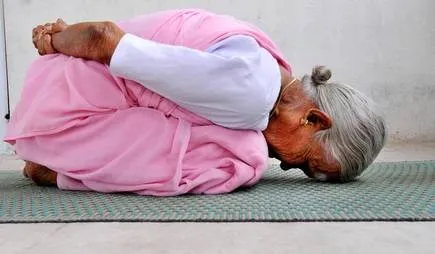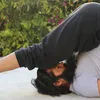International Yoga Day: Practice Yoga at home for mental and physical balance during COVID-19
On #InternationallYogaDay, here's why yoga needs to be a part of your daily exercise routine. It’s good for your mental health and physical well-being.
The pandemic has taken a toll not only on our physical health, but also on our mental wellbeing. Recognising the vast range of health benefits of yoga, this year’s commemoration of the International Yoga Day focuses on ‘Yoga for well being’. Yoga is a form of exercise that uses our own strength rather than expensive equipment and can hence be practiced within the four walls of our homes. These are the many benefits of yoga and how it promotes the holistic health of every individual. However, before starting on any exercise regimen, no matter how simple it looks, seek the advice of your doctor, especially if you have underlying health issues.

Every year, International Yoga Day is celebrated on June 21, which is also the day when the sun is directly above the Tropic of Cancer.
Image: Twitter
ALSO READ

Helps ease stress and anxiety
Yoga helps ease stress and reduces the amount of cortisol, the primary stress hormone, in the body. According to Healthline, a study demonstrates that post a three-month yoga programme, 24 women who were originally emotionally distressed, had significantly lower amounts of cortisol in their body. In these unprecedented times, uncertainty and anxiety are getting the better of everyone. Many use yoga as a way to find a sense of peace and cope with the feelings of anxiousness.
Try easy pose, cat-cow pose, and corpse pose
Enhance sleep quality
Although the reasons are not quite clear yet, studies have shown that yoga increases secretion of melatonin, a hormone that regulates sleep. Yoga has a positive effect on stress levels, anxiety, depression, blood pressure and chronic pain all of which are often root causes of poor sleep.
Try butterfly pose, child pose, and corpse pose
Helps improve breathing
Pranayama is the yogic practice of observing and gaining control over our breathing. ‘Prana’ means ‘vital force of life’ and ‘yama’ means to gain control. Studies have shown that these breathing exercises improve hyperventilation symptoms and lung function. It’s also known to increase the vital capacity of lungs, the maximum amount of air that can be expelled from the lungs. Improved breathing helps build endurance, optimises performance and keeps our lungs and heart fit.
Try sitting half-spinal twist, cross-legged sitting pose, cobra pose

V Nannamal was India's oldest yoga teacher and was still teaching at the age of 98.
Image: Twitter
ALSO READ

Improves heart health
Yoga can reduce your cholesterol, blood sugar levels and blood pressure by improving metabolism and enhancing artery relaxation. In the fast-paced world that we live in, stress is a major cause of heart diseases. Yoga helps ease stress and reduces the risk of heart diseases. It also helps burn calories and break a sweat which is essential for a healthy heart.
Try cow face pose, bridge pose, half spinal twist pose
Helps reduce chronic pain
Many suffer from chronic pain and the reason behind it can range from injury to arthritis. A study in 2005 proved that yoga could help reduce pain and improve functioning among those with osteoarthritis of the knees. It helps with migraine, lower back pain and even pain caused by injuries. For example, yoga helps stimulate the vagus nerve which is shown to be effective in relieving migraines.
Try belly breathing, lock and open arm, and shoulder touch. These can be done while seated in a chair.
Improves flexibility and balance
Many people incorporate yoga in their fitness routines to improve flexibility and balance. A 2013 study showed that practicing yoga could help improve mobility among older adults. Practicing merely 15-30 mins of yoga on a regular basis could make a huge difference. Improved balance also helps increase coordination in everyday life.
Try seated forward bend, and cobbler’s pose
Edited by Diya Koshy George






